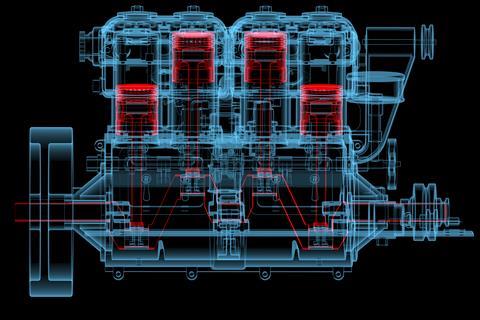Vehicle Components Shop Offering Engines for Africa: Your Source for Top Quality Auto Elements
Vehicle Components Shop Offering Engines for Africa: Your Source for Top Quality Auto Elements
Blog Article
The Pursuit for Ultimate Driving Power: Checking Out the Peak of Engine Efficiency and Technological Breakthroughs in the Automotive Industry
In the realm of vehicle engineering, the search of maximum driving power has actually been a ruthless mission that has unfolded via the development of engine style and the assimilation of sophisticated modern technologies. From the careful craftsmanship of burning engines to the fast improvements in electric propulsion systems, the automotive industry stands at the cusp of a new era identified by extraordinary performance capabilities. As engineers and scientists dig much deeper into the realms of computational fluid dynamics and explore cutting-edge gas innovations, the horizon of opportunities increases exponentially. Keep tuned as we unravel the intricate tapestry of technical breakthroughs that are forming the future of automotive power and performance.
Evolution of Engine Layout

Additionally, the integration of turbocharging and supercharging technologies has changed engine style by increasing power without substantially increasing engine dimension. These forced induction systems press the intake air, allowing for more fuel to be ignited, therefore creating better power outcome from a smaller engine. This development has actually been particularly crucial in enhancing the efficiency of smaller sized displacement engines while preserving fuel performance standards.

Performance-Enhancing Gas Technologies
The application of advanced fuel modern technologies has significantly contributed to improving engine efficiency in modern vehicles. Biofuels, derived from renewable sources like corn, sugarcane, or algae, deal lowered discharges and boosted engine effectiveness. Furthermore, gas additives and detergents are being developed to clean engine components, maximize combustion, and lower friction, thus boosting overall vehicle efficiency.
Improvements in Electric Propulsion
Significant strides in electrical propulsion innovation have transformed the vehicle industry, paving the method for a new period of sustainable and efficient transport. Electric automobiles (EVs) are acquiring popularity because of their environmental advantages and developments in battery innovation, making it possible for longer driving varieties and shorter billing times. Suppliers are investing heavily in r & d to improve the performance of electrical propulsion systems, concentrating on increasing power output, boosting energy efficiency, and reducing general weight.
One notable advancement in electric propulsion is the development of advanced electrical i was reading this motors that provide greater torque and power thickness, leading to enhanced velocity and total driving efficiency. Additionally, regenerative stopping systems have actually been fine-tuned to save and capture energy during deceleration, further boosting the performance of EVs.
Additionally, the combination of smart innovations, such as man-made intelligence and anticipating analytics, is optimizing the management of electric propulsion systems, ensuring optimal efficiency under different driving problems. These innovations in electrical propulsion are improving the automotive landscape, driving the market in the direction of a much more lasting and amazed future.
Influence of Computational Fluid Characteristics
With developments in electric propulsion pressing the borders of automotive modern technology, the integration of Computational Fluid Characteristics is playing a crucial function in maximizing wind resistant performance and improving overall performance in lorry design. Computational Liquid Dynamics (CFD) entails the use of computer system simulations to analyze the flow of air around a lorry, enabling designers to predict exactly how layout changes will certainly impact aerodynamics without the need for expensive physical models. By properly modeling a knockout post air movement patterns, CFD permits the improvement of lorry forms to reduce drag, improve air conditioning, and boost stability.
CFD makes it possible for designers to maximize air flow around parts such as radiators, engine bays, and wheel wells, contributing to enhanced efficiency and total driving experience. In final thought, the integration of Computational Fluid Dynamics represents a considerable step ahead in the mission for best driving power and efficiency in the auto industry.
Future Patterns in Engine Innovation
In the dynamic landscape of auto engineering, innovative advancements are shaping the future trajectory of engine technology. The future of engine style is marked by a solid focus on sustainability, performance, and effectiveness. Suppliers are significantly concentrating on establishing engines that not only provide high power outputs however likewise prioritize ecological duty by lowering exhausts and boosting gas effectiveness.
One noticeable fad in engine advancement is the rise of electrification. Crossbreed and electrical powertrains are obtaining traction as feasible options to standard combustion engines. These technologies provide the possibility here are the findings for substantial decreases in carbon exhausts and enhanced energy effectiveness, lining up with worldwide initiatives to deal with environment adjustment.
Furthermore, developments in materials scientific research and manufacturing techniques are making it possible for the production of lighter and extra long lasting engine components. This change in the direction of lightweight materials such as carbon fiber and aluminum alloys adds to enhanced performance and fuel economic climate.
Verdict
To conclude, the search of utmost driving power in the automotive market remains to drive developments in engine layout, gas innovations, electric propulsion, and computational liquid dynamics. The development of these modern technologies is shaping the future of engine innovation, paving the way for extra effective and reliable lorries (engines for africa). As the industry remains to push the boundaries of what is possible, we can expect to see much more revolutionary advancements in the mission for peak performance
One of the essential milestones in engine design advancement is the change from standard carbureted engines to contemporary fuel-injected systems. By precisely metering the fuel delivery to each cyndrical tube, fuel-injected engines enhance combustion, resulting in better efficiency and decreased environmental impact.
Additionally, the integration of turbocharging and turbo charging innovations has changed engine style by improving power without dramatically boosting engine size (engines for africa).The execution of sophisticated fuel modern technologies has substantially added to improving engine efficiency in modern-day cars. Additionally, gas additives and cleaning agents are being developed to tidy engine elements, maximize combustion, and lower friction, therefore improving overall automobile performance
Report this page